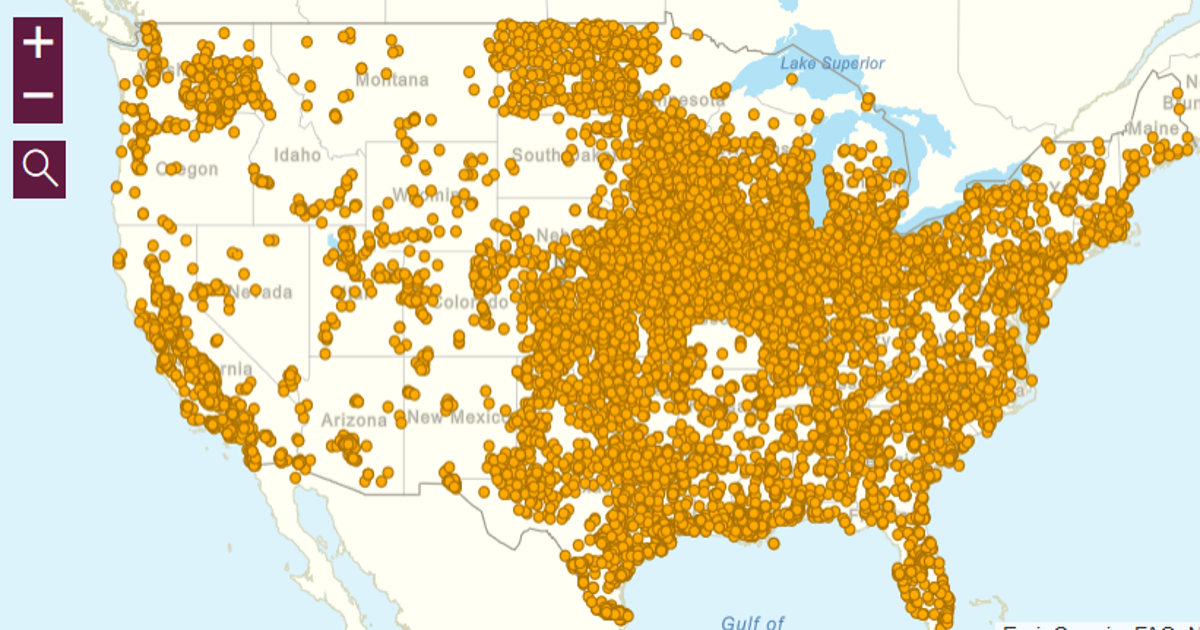A new online map shows that 124 million Americans live, work, and play under constant threat from chemical facilities — which, at any time, could release toxic gas or explode. The map, released by the Environmental Justice Health Alliance, Coming Clean, and the Campaign for Healthier Solutions, found that nearly 40 percent of Americans live within just three miles of a facility that stores or manufactures large amounts of toxic gas or explosive materials — like large refineries, chemical manufacturing plants, and even water treatment facilities, which handle large volumes of chlorine gas. In the event of an accident, some of these facilities could harm people as far as 25 miles away.
The danger of these facilities is real. In 2013, in West, TX, for example, a small fire inside a fertilizer plant resulted in a catastrophic explosion — destroying over 150 buildings, killing 15 people and injuring another 160. The event changed the town forever — and it could have been much worse. West Middle School was one of the dozens of buildings leveled by the explosion. Fortunately, school was not in session at the time — but if students had been at their desks the result may have been unspeakable.
Today, there are more than 12,000 similarly dangerous facilities scattered across the nation. Roughly 45 percent of all schools in the US are located within three miles of these locations. That means 24 million children attend schools situated within a chemical disaster-danger zone. Some 11,000 hospitals and nursing homes are also within three miles of hazardous chemical facilities and, when disaster strikes, these facilities will be extremely difficult to evacuate.
Sadly, accidents at these facilities are fairly routine. The EPA reports that, over the last five years, these chemical plants have had over 1,200 accidents. Roughly 16,000 people were injured in these accidents, and 160,000 people were forced to evacuate.
The difference between a small-scale accident and a catastrophic disaster can be small, and chemical plants are constantly flirting with danger on a scale that’s difficult to imagine. In 2015, for example, a refinery in Torrance, just outside Los Angeles, CA, suffered a minor explosion that sent a piece of debris towards a massive container of volatile hydrofluoric acid. Had the container been struck, thousands of people in the surrounding neighborhoods may have been injured or killed.

In addition to the vast scale of the risk posed by these facilities, a new report accompanying the map also provides insight into who lives within these three-mile ‘fenceline’ zones near dangerous chemical facilities. By looking at nine separate communities, researchers found a clear picture of environmental injustice. Communities near chemical facilities are disproportionately Black and Latinx. They suffer far greater poverty rates than the average neighborhood in the US. On top of the risk of chemical disaster, these communities also suffer higher-than-average rates of cancer and respiratory disease linked to air pollution.
Despite all this evidence of enormous risk for those living near chemical facilities — and the disproportionate way in which this risk is distributed — the Trump Administration’s Environmental Protection Agency (EPA) has made several attempts to block or delay improved safety rules for these hazardous chemical facilities, improvements that were sought by the Obama Administration. Chemical facility safety rules are required by the Clean Air Act, and these updates are designed to strengthen disaster-prevention rules, improve emergency preparedness, and give communities the right to know about chemical plants that threaten their lives. They were scheduled to take effect in March, 2017 but, at the behest of industry, the EPA shelved them arbitrarily. In response, the Environmental Justice Health Alliance joined other plaintiffs — including the Union of Concerned Scientists, Sierra Club, and Coming Clean, among others — and successfully sued to force these safety improvements into effect.
While these bolstered safety measures stand for the moment, Trump’s EPA, under Acting Administrator Andrew Wheeler, is now pursuing an effort to roll them back outright. It’s essential that the disaster-prevention measures remain intact to reduce risks in fenceline communities across the country.
Find out if you live in a ‘Fenceline’ zone around a chemical facility, read the full report, and learn more about the work of the Environmental Justice Health Alliance, Coming Clean, and the Campaign for Healthier Solutions.
Our most important fundraising appeal of the year
December is the most critical time of year for Truthout, because our nonprofit news is funded almost entirely by individual donations from readers like you. So before you navigate away, we ask that you take just a second to support Truthout with a tax-deductible donation.
This year is a little different. We are up against a far-reaching, wide-scale attack on press freedom coming from the Trump administration. 2025 was a year of frightening censorship, news industry corporate consolidation, and worsening financial conditions for progressive nonprofits across the board.
We can only resist Trump’s agenda by cultivating a strong base of support. The right-wing mediasphere is funded comfortably by billionaire owners and venture capitalist philanthropists. At Truthout, we have you.
We’ve set an ambitious target for our year-end campaign — a goal of $250,000 to keep up our fight against authoritarianism in 2026. Please take a meaningful action in this fight: make a one-time or monthly donation to Truthout before December 31. If you have the means, please dig deep.
